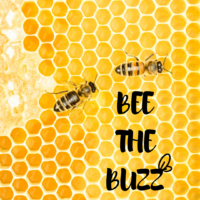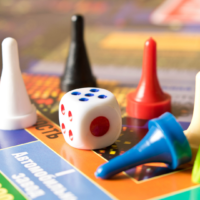Inquiry Project Based Learning Buzz
Bee a Mover, a Shaker or a Maker
By Jennifer Pieratt
What’s the buzz on inquiry project-based learning? Inquiry-based learning (IBL) is centred around questions– students develop their own and learn to use technology, research, and experiences to construct their answers. It means asking students to investigate an open question and use creative problem-solving to reach a conclusion which they must then defend. IBL and PBL are two sides of the same coin, as combining both simply means extending inquiry beyond research into fieldwork, meeting with experts, designing and experimenting. Inquiry project-based learning not only reinforces the students’ understanding of core concepts but heightens their curiosity, which leads to excellent academic performance, according to a study from the Association for Psychological Science. You can easily implement inquiry project-based learning by studying bees, which live “as people should live: naturally, symbiotically, and in a manner that only contributes positively to the world around them”, to quote Ted Dennard. Bees are an excellent topic to spark inspiration in any and all subject areas, not only due to their very nature, but also because hive loss worldwide is an interdisciplinary issue which lends itself to inspiration. Keep reading to learn more about how you can launch inquiry project-based learning about bees in your math, science, and ELA classes.
Math and bees don’t seem to fit together, yet combining both makes learning remarkably stimulating for students. Adding inquiry project-based learning to this cocktail will underscore the “intrinsic reward of discovery itself” for your students, making learning a rewarding experience, according to a groundbreaking Harvard Educational Review article. When it comes to specific topics, you can push your students to look at the bee product market and calculate the budget impact or amount of bees necessary given certain constraints. Don’t hesitate to use entry events such as this article about an urban beekeeping company to introduce the subject. Another fun idea is to dive into the geometry of beehives and the math behind the use of the honeycomb in airplanes, snowboards, and plain old cardboard. What else? Teach your students modeling by using the rates of disappearance of bees, or engage your students with Fermi math problems, which require students to find rough estimates of quantities impossible to measure directly. Challenge your class by asking: how many bees would it take to pollinate an orchard? If the queen dies, how many days will it take for a new queen to take over? If you’re looking to create interdisciplinary projects, this last question can easily be linked to your science class by studying bees’ reproduction and life cycle.
Of course, bees can help you get through NGSS and other standards in your science class through studying queen bees, egg production, and bee life cycles. However, through inquiry project-based learning, you can push your class to gain a deeper understanding of the content and develop autonomous learning. Take a look at the hierarchy within a hive or bee survival strategies and methods of communication. Start by introducing the subject to your class with a video about the bee “waggle dance” and the reliance of bees on the sun’s position to communicate. Then, you can have students create a board game which incorporates facts about environmental factors and their influence on bees’ social behaviour. Yet another engaging project idea would be to build homes for the rapidly disappearing pollinators and find ways of spreading awareness about the issue in the students’ local community through this. You can find tips for starting PBL projects here. Don’t forget to make inquiry a priority! Each of your students should apply his or her own research and thinking style to the problem at hand (ex. hive loss), putting themselves at the centre of the experience.
Kids tend to adore bees, and having students explore the best ways of helping these little creatures in their ELA class can lead to excellent results. Have you heard of I-Search blog posts combining scientific concepts and bee advocacy? The idea behind I-Search writing is to cultivate curiosity by having students find answers to real world problems ex. creating a bee friendly garden, or helping families implement bee-friendly measures. Note that a crucial part of inquiry project based-learning is letting students pilot their own learning experience. They pick their driving question, choose their research methods, and in this case, their own writing format and techniques. Your I-Search project could also take the form of a news report in which students could get in touch with experts and interview them about the local bee situation. But the project could also be an op ed, a piece of advertising, a book review, recipe book, or even a manual or explanatory video inspired from the “Beekeeper’s Bible”. One creative way of evaluating their speaking and listening skills would be to have them organize a “Shark Tank” episode in which different students pitch their bee-friendly brand to a panel of judges. No matter what idea you decide to carry out, it’s important to have students write down their reflections and self evaluations throughout the project. After all, it’s through inquiry that students are brought to continuously question and justify their learning choices, building upon their comprehension, critical thinking, and communication skills.
Inquiry project-based learning and bee disappearance as a real world problem form the perfect combo to make student-driven learning an easy process. The ideas above are just a starting point to make inquiry an essential part of your different classes. Keep in mind that you can also implement IPBL through long-term interdisciplinary projects like the Hive Alive! Project by the 8th grade class at the Northland Pines Middle School in which students created their own honeybee farm. To do so, start planning in February. Introduce the subject to your students with an entry event or a meeting with a bee expert a few weeks later. Then, have students formulate a driving question in March and work to create a final product (ex. a bee house for the school garden with an informational presentation) which can be exhibited in June. Inquiry project-based learning really isn’t that hard to implement if you prepare your bee assignment in advance. Keep scrolling to find a list of resources tailored to your needs. If you need extra help, don’t hesitate to take a look at the Crafted Curriculum website for tips about launching a project.
Resources
Quick facts about bees
- http://www.mnn.com/earth-matters/animals/stories/the-importance-of-honeybees
- http://www.ccpollen.com/the-importance-of-bees.html
- http://www.benefits-of-honey.com/honey-bee-facts.html
- https://www.pbslearningmedia.org/resource/kqed07.sci.life.oate.producers.betterb/the-bounty-of-bees/
Lesson plans about bees
- http://www.nea.org/tools/lessons/59403.htm
- https://kidsgardening.org/lesson-plans-be-a-bee/
- https://www.naturenates.com/free-lesson-plan/
- https://www.agclassroom.org/teacher/matrix/lessonplan.cfm?lpid=84
- https://www.pbslearningmedia.org/resource/kqed07.sci.life.oate.beeabee/be-a-bee/
Bee advocacy work and entry events
- http://beesweetlemonade.com/blogs/bee-lieve
- http://www.kvue.com/story/features/2015/03/20/austin-entrepreneur-10-appears-on-shark-tank/25125685/
- https://thebeecause.org/
- https://newsela.com/ for articles adapted to your students’ reading skills
Sample bee projects
- https://www.hightechhigh.org/htex/project/the-bee-project/
- https://alstonridgemadlon.weebly.com/project-resources-bees.html
- https://twitter.com/npmsbeeproject
- Research urban beekeeping, dependency on bees, and bee cost pricing for more ideas
Suggested books for further reading



